A venturi meter is a type of flowmeter that measures flow rate by using a venturi tube to create a constriction in the flow. As the fluid flows through the tube, its pressure changes due to the varying cross-sectional area, which can then be measured and correlated to the flow rate.
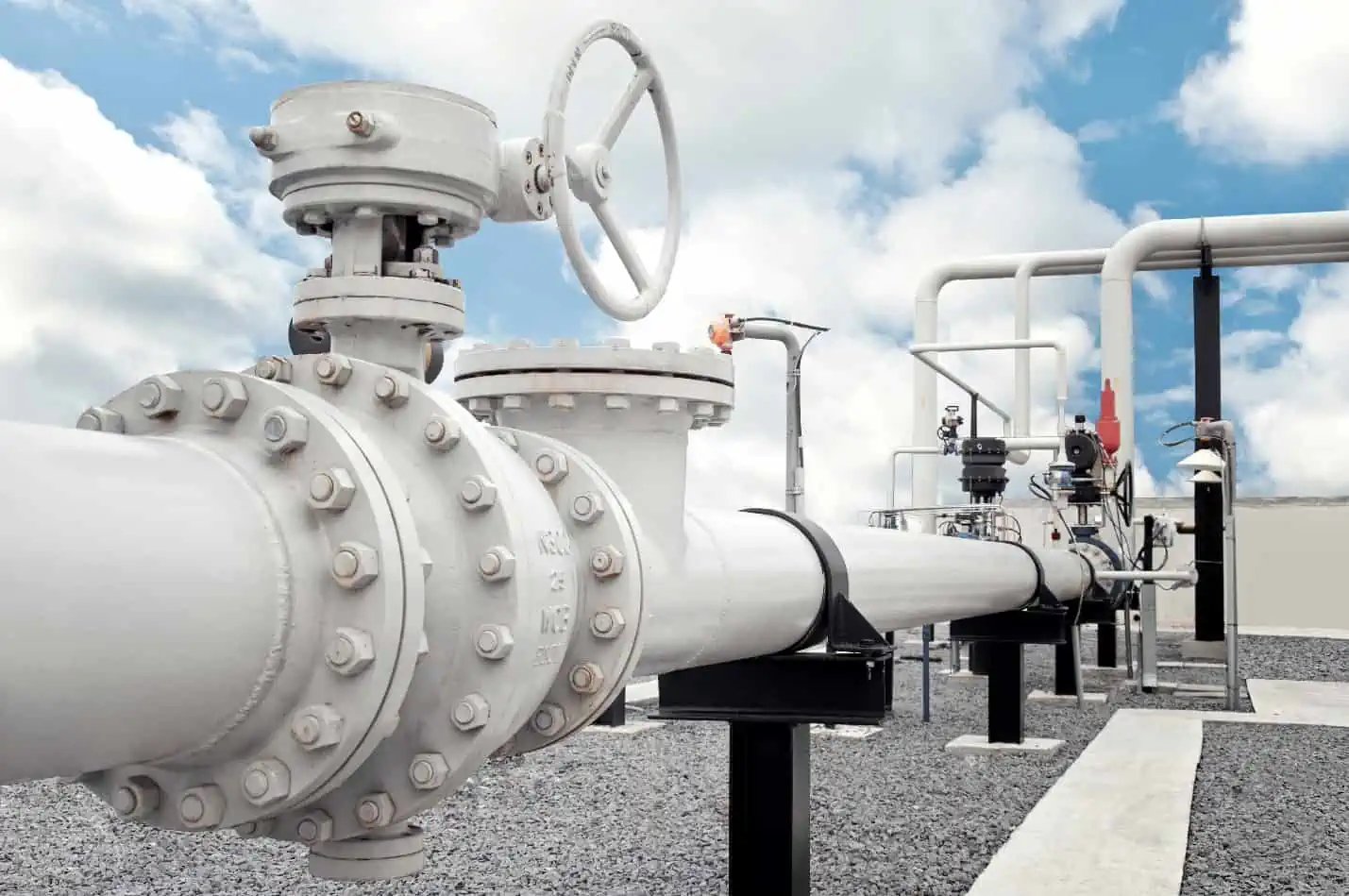
In this article, we will take a closer look into how venturi meters operate.
How Does a Venturi Meter Work
A Venturi meter is a flow measurement device used to measure the flow rate of a fluid in a pipeline. It operates on the principle of Bernoulli’s equation, which relates the pressure of a fluid to its velocity.
As shown in the diagram below, a venturi meter consists of a pipe with a gradually tapered or constricted section in the middle. This constriction is known as the “throat” of the Venturi meter.

Elevate Your Engineering With Excel
Advance in Excel with engineering-focused training that equips you with the skills to streamline projects and accelerate your career.
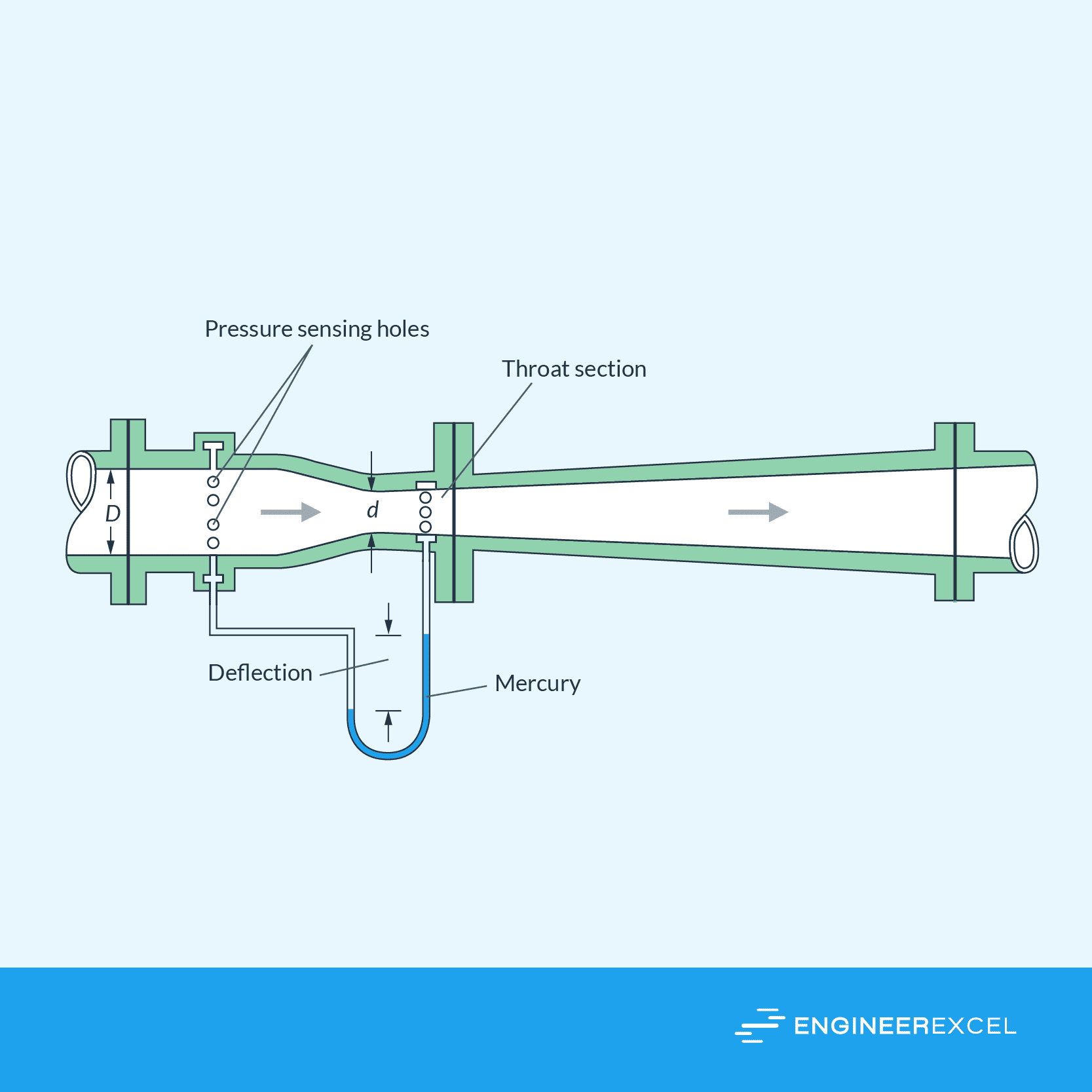
When fluid flows through the Venturi meter, it speeds up as it enters the constricted throat due to the reduced cross-sectional area. According to Bernoulli’s principle, as the velocity of the fluid increases, its pressure decreases. This pressure drop is measured using pressure taps located before and after the throat.
The pressure difference between the two taps is proportional to the square of the fluid velocity. By measuring this pressure difference, you can calculate the velocity of the fluid, as follows:
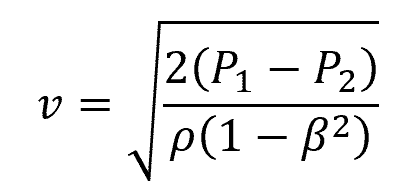
Where:
- v = flow velocity at the throat [m/s]
- P1 = pressure at the inlet [Pa]
- P2 = pressure at the throat [Pa]
- ρ = density of the fluid [kg/m3]
- β = ratio of the throat diameter to inlet diameter [unitless]
Note that the equation above assumes no losses due to friction and other factors. Once the velocity is known, the flow rate can be calculated by multiplying it with the flow area across the throat. The equation then becomes:
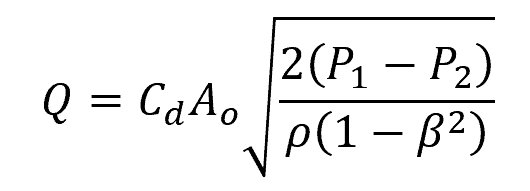
Where:
- Q = flow rate [m3/s]
- Cd = discharge coefficient of the venturi meter [unitless]
- Ao = area of the throat [m2]
Notice the inclusion of a nondimensional parameter called the discharge coefficient. This coefficient accounts for the deviation of actual flow behavior from ideal theoretical conditions. It is a correction factor that helps in adjusting the theoretical flow rate calculations to match the actual flow rate through the Venturi meter.
The discharge coefficient considers multiple factors that can impact the precision of flow measurement. These factors include the properties of the fluid being measured (such as density and viscosity), the flow conditions upstream and downstream of the Venturi meter (including turbulence and flow profile), and the installation of the Venturi meter in the piping system (including factors like pipe diameter, length of straight pipe sections before and after the meter, and the presence of valves or fittings).
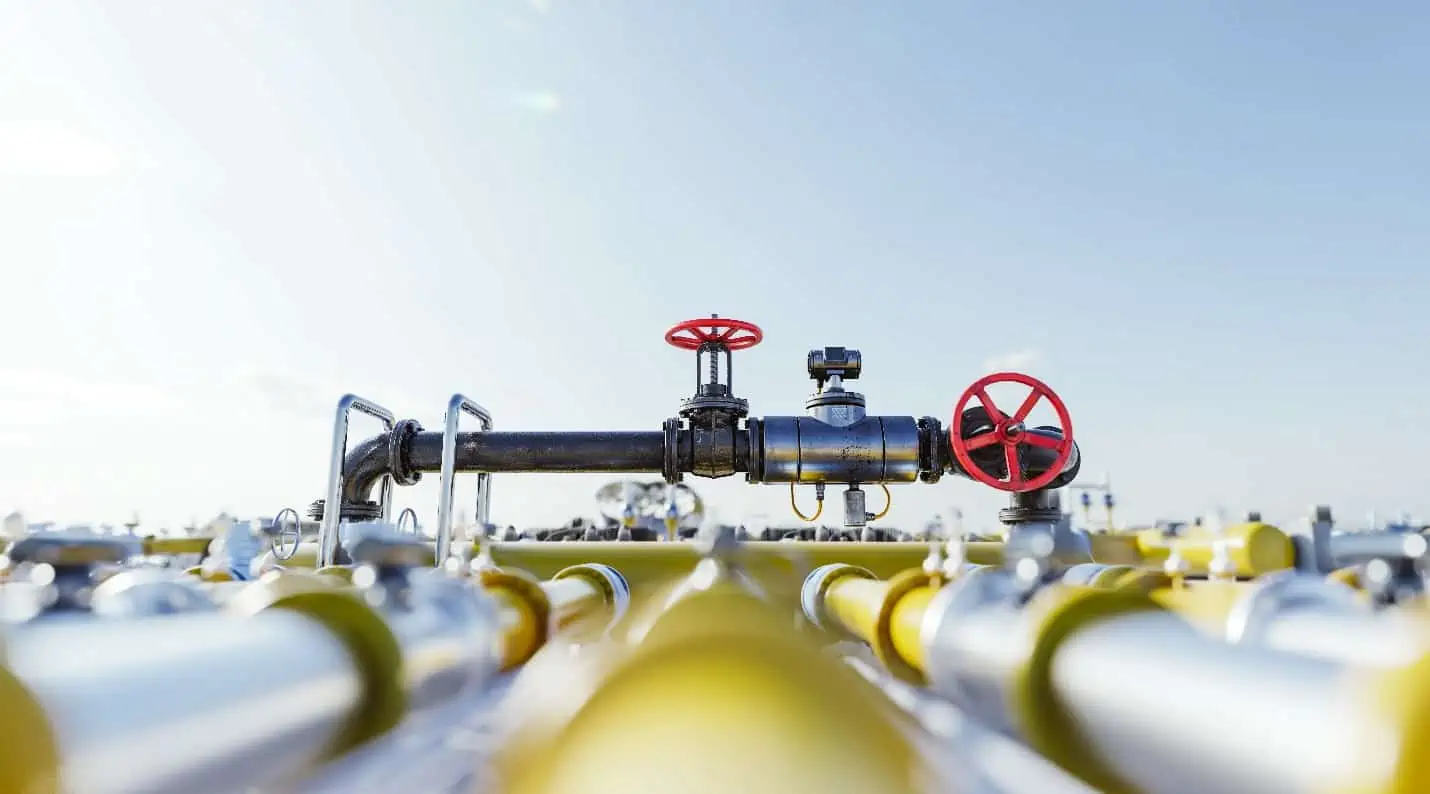
The discharge coefficient is typically determined experimentally through calibration tests for a specific Venturi meter under specific flow conditions.
Design and Structure of Venturi Meter
The venturi meter can be divided into three primary sections: the converging section, the throat section, and the diverging section.
Converging Section
The converging section consists of a gradually decreasing pipe diameter, which in turn causes an increase in fluid velocity. This increase in velocity generates a drop in fluid pressure as per Bernoulli’s theorem. The converging section ensures a smooth transition for the fluid from its initial diameter to a smaller diameter at the throat.
Throat Section
The throat section of the Venturi meter is characterized by a constant diameter, usually the smallest diameter in the device. This region experiences the highest fluid velocity and the lowest pressure in the meter. At this point, the pressure difference between the upstream and throat sections is measured, allowing the calculation of flow rate through the meter.
Diverging Section
The final part of the Venturi meter is the diverging section, where the fluid’s velocity gradually decreases, and the pressure increases as it exits the device. The gradual increase in diameter ensures a smooth recovery of pressure. This section assists in minimizing energy loss and returning the fluid flow to its original conditions as it leaves the meter.
Applications, Advantages, and Disadvantages of Venturi Meters
Venturi meters are widely used to measure pipe flow rate in various industries, such as water treatment, oil and gas, and chemical processing, where accurate flow measurements are crucial for process control and efficiency.
They offer several advantages over other flow measurement devices. One key advantage is their high accuracy and reliability. They are known to provide precise measurements, making them suitable for a wide range of flow rates. Moreover, these meters can be installed in various orientations, such as vertically, horizontally, or inclined, offering added flexibility.
Another key advantage is low pressure loss. This is because the venturi meter’s design, with its gradually converging and diverging sections, allows the fluid to flow smoothly, minimizing the turbulence and energy loss. As a result, venturi meters cause less pressure loss compared to other types of obstruction flowmeters, such as orifice meters, making them a more energy-efficient choice for fluid flow measurement.
Lastly, because of their streamlined structure, they are less susceptible to clogging or damage from particles in the fluid. Hence, they can be a good choice for measuring the flow rate of slurries and fluids containing dirt or particulate matter.
Despite their advantages, Venturi meters also come with some disadvantages. One notable drawback is their high initial cost. Since they can be more complex and may require precise positioning and alignment, the construction and installation of Venturi meters can be more expensive compared to other flow measurement devices.
Another limitation is their fixed flow rate capacity, which is determined during installation and operation. This fixed nature could make it less suitable for applications requiring flexible flow rate adjustments.
